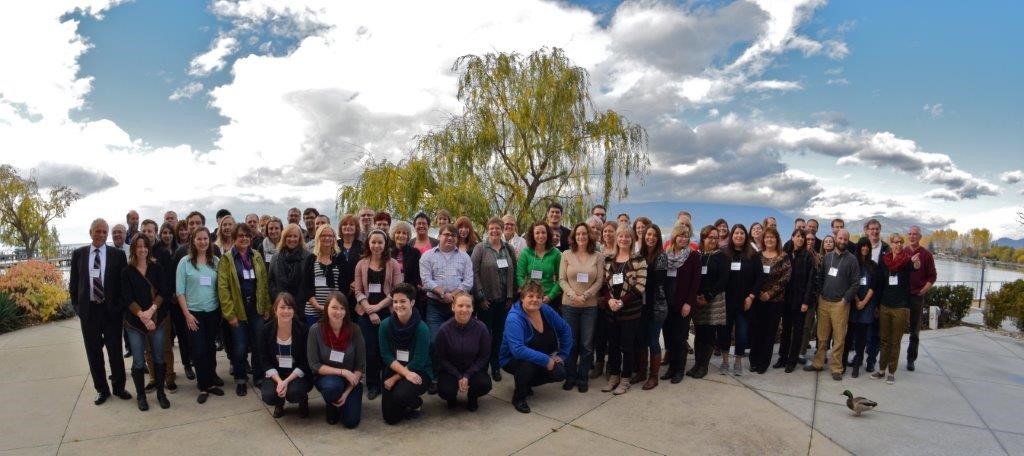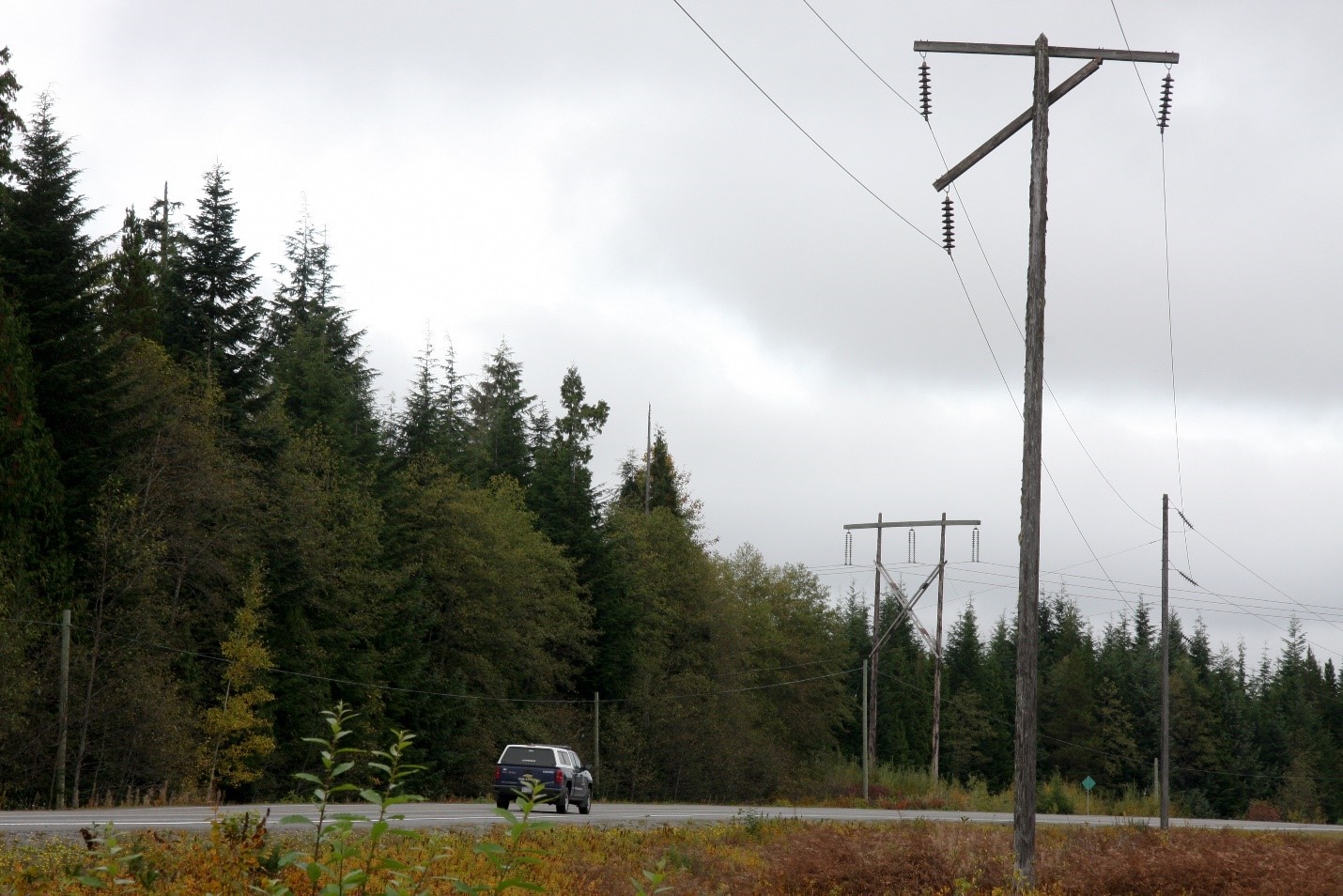
British Columbia is booming and, as our population grows, and communities build and expand, the relationship between our highways and adjacent land use changes. Our Development Services team guides road network development through rural subdivision approvals, preserves highway capacity with access and controlled area permits and protects highway safety through special events and works permits.
For example:
- Business owners or developers with interests alongside our roads and highways want to connect with customers and draw them in. Development Services works with them to make this happen without congestion or collisions.
- Have you heard of the Grand Fondo cycling event? Development Approvals makes sure the racers and other traffic move together along BC highways safely.
- Utility providers need clear paths to run telecommunications, gas and power lines. Development Approvals makes sure those poles aren’t a hazard and those pipes don’t break up the road.
Rural Subdivision Approvals 101
Anyone wanting to subdivide land outside of a municipality in BC must have their subdivision approved by a Provincial Approving Officer (PAO). The Land Title Act sets out the requirements of subdivision and appoints Provincial Approving Officers to sit with the Ministry of Transportation and Infrastructure.
Our PAOs work alongside a team of District Development Technicians to review each rural subdivision development application to make sure that all legislative and bylaw requirements associated with subdivision are met, so the plan can be registered in the Land Title Office and new lots created. The PAO also has an approval role in municipal subdivisions next to controlled access highways. In this role, the PAO is a designated official for the Minister of Transportation and Infrastructure, helping to make sure the municipal subdivision doesn’t negatively impact the highway or the safety of the travelling public.
Some of the items we consider during the rural subdivision application review are:
- road status
- safety of access
- potential impact of geotechnical hazards and flooding on the subdivision lots
- impacts to archaeology and environment
- ensuring overall public interest is maintained
Learn more about the rural subdivision approval process or let us know if you have a question in the comments below.

Permits and Approvals Explained
Highway Special Events Permits
Special event permits are required for any organized event where participants will be using a portion of the highway and may affect the normal flow of traffic. Our staff grant approximately 500 permits per year to individuals, organizations and companies for special events such as filming, parades, marathons, cycling events, walkathons, running events, car shows, charity activities – even cattle drives!
Works Permits
We also issue permits for certain types of work to occur in the highway right of way. You must apply for and receive a permit before constructing or maintaining a work or structure or pipe, on roads or land controlled by the ministry. Some examples of works that might require permits include:
- bus shelters and benches
- fencing
- mail and newspaper boxes
- sidewalks and landscaping
- utility installations
- exploratory survey

Controlled Access Highways and Areas
A highway’s safety and efficiency depends to a large extent on the kind of conflict it has with through traffic (with most conflict coming from traffic moving to and from connecting streets, businesses and residences along the highway).
Some highways, usually numbered routes intended to carry higher volumes of inter-regional traffic, are designated as “controlled access highways”. The intent of controlled access highways is to preserve a reasonable level of service for long-trip vehicles on the major highway and street system, and to enhance safety for all motorists. We have a Controlled Access Strategy in place for use on controlled access highways and in controlled areas. It is intended to:
- promote a balanced hierarchy of road facilities in all areas
- discourage urban sprawl in rural areas
- limit points of access to trunk high-speed highways
- regulate land use within the controlled area
There you have it. Our Development Services program in a (not so tiny) nutshell. If you have any questions about this, or anything else we do, let us know in the comments below.
I would like to get information on how to get the highway directional signs updated for Highway 16 on Haida Gwaii. The green & white signs that specifically list communities and the distance between them. The existing signs are old and use incorrect community names.
Hello and thank you for your message. Please reach out to our staff in the Terrace office to discuss this issue further. The contact information is listed below.
Skeena District
4825 Keith Avenue
Terrace, BC V8G 1K7
250 615-3970
https://www2.gov.bc.ca/gov/content/transportation/transportation-reports-and-reference/regional-district-contacts/northern-region
Could you please advise who decides what rural roads get repaired/replaced? Is this a function of the development services?
Hi there Mandy,
Decisions to repair/replace roads outside of municipal jurisdiction falls under the responsibility of the district they are in. District staff work with community stakeholders and ministry staff to determine project work for upcoming years. We encourage you to connect with our staff in the district office closest to you and ask about a specific area you have concerns with. Here is a link to our contact page: https://www2.gov.bc.ca/gov/content/transportation/transportation-reports-and-reference/regional-district-contacts
Hope this is helpful.
Hi , the link above to the rural subdivision approval process is broken.
Lara
Thanks for the catch, Lara! It’s fixed.
Hi
I have a restrictive covenant on my property that was approved by the regional approving officer from the ministry of transportation and highways in 1981. I would like to have the convenant reviewed and hopefully amended. I would really appreciate some help. The property in question is a small parcel in the Kamloops Division Yale District.
Hi there Jennifer,
Please contact our Kamloops regional office with your concern and they should be able to connect you with staff to review your property.
447 Columbia Street
Kamloops, BC V2C 2T3
Telephone: 250 828-4220
Email: Kamloops.Regional.Transportation@gov.bc.ca
We hope that this is helpful.
Why is it so darn difficult to get an answer on this website??
What are the requirements of a homeowner who wants to subdivide their
property?
What reports are required? Where are the application forms? What surveys are required?
Wanting to subdivide a 5 Acre parcel in the Rural District of Nanaimo, located in Deep Bay, BC.
The RDN refers me to Ministry of Transportation, however, navigating this website is like pulling teeth with a socket wrench. Phfft. Help please.
Hi Deborah – we are sorry to hear you are having difficulties accessing the information you are looking for.
Here’s a link to a high level overview of the subdivision process: https://www2.gov.bc.ca/assets/gov/driving-and-transportation/funding-engagement-permits/subdividing-land/rural_subdivision_guide.pdf
https://www2.gov.bc.ca/gov/content/governments/local-governments/planning-land-use/land-use-regulation/subdividing-land
https://www2.gov.bc.ca/assets/gov/driving-and-transportation/funding-engagement-permits/subdividing-land/planning_designing_access_developments_manual.pdf
If you would like to connect with someone in the Nanaimo area office regarding development approval, here is their contact info:
Vancouver Island District
3rd floor – 2100 Labieux Rd.
Nanaimo, BC V9T 6E9
250-751-3246
Hours of operation:
8:30 am to 4:30 pm Monday to Friday
We hope that this is helpful.
I admire and celebrate the abilities of the MoTI Development Approvals group…you all rock!
Hear! Hear! Thanks David.